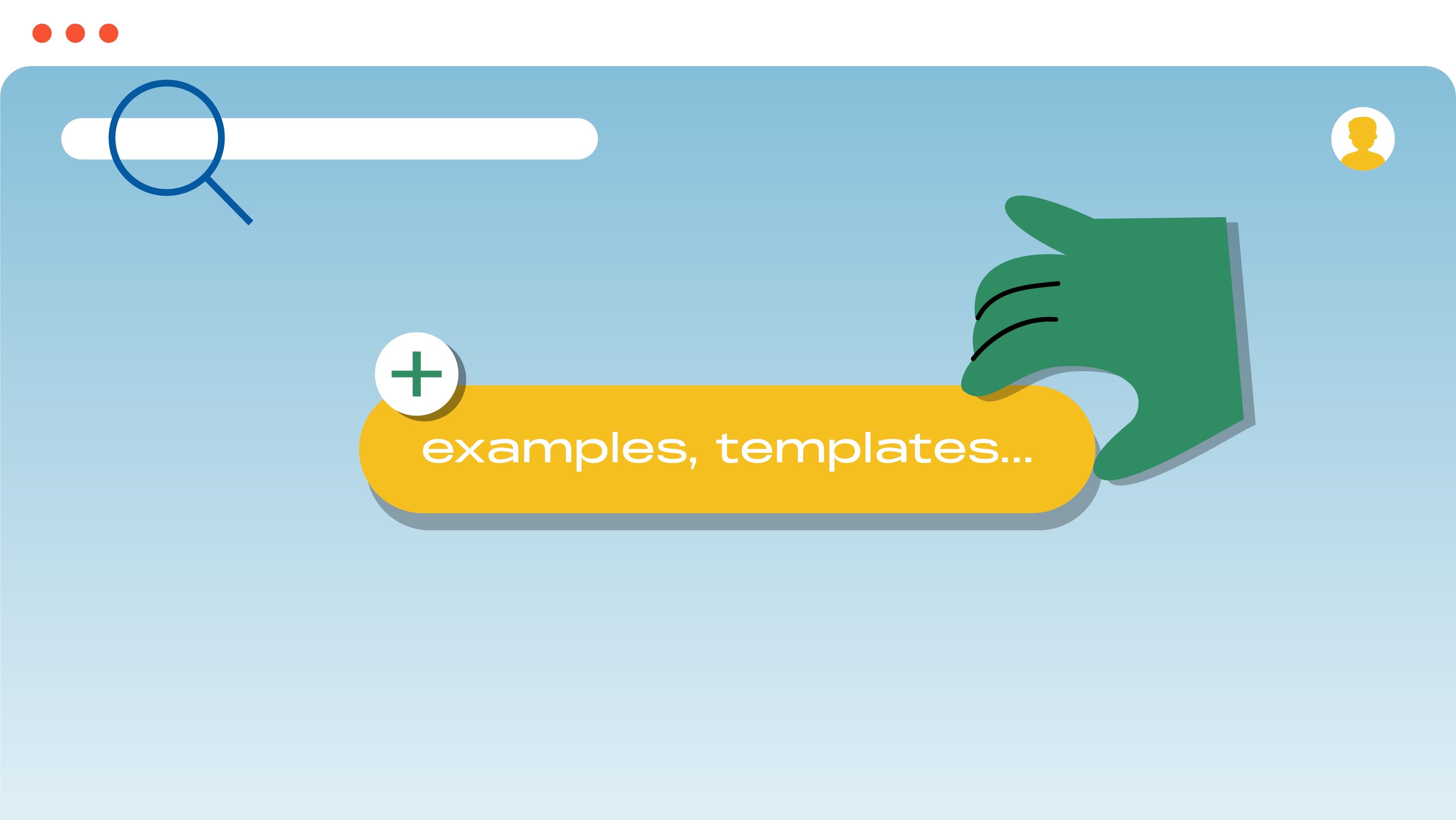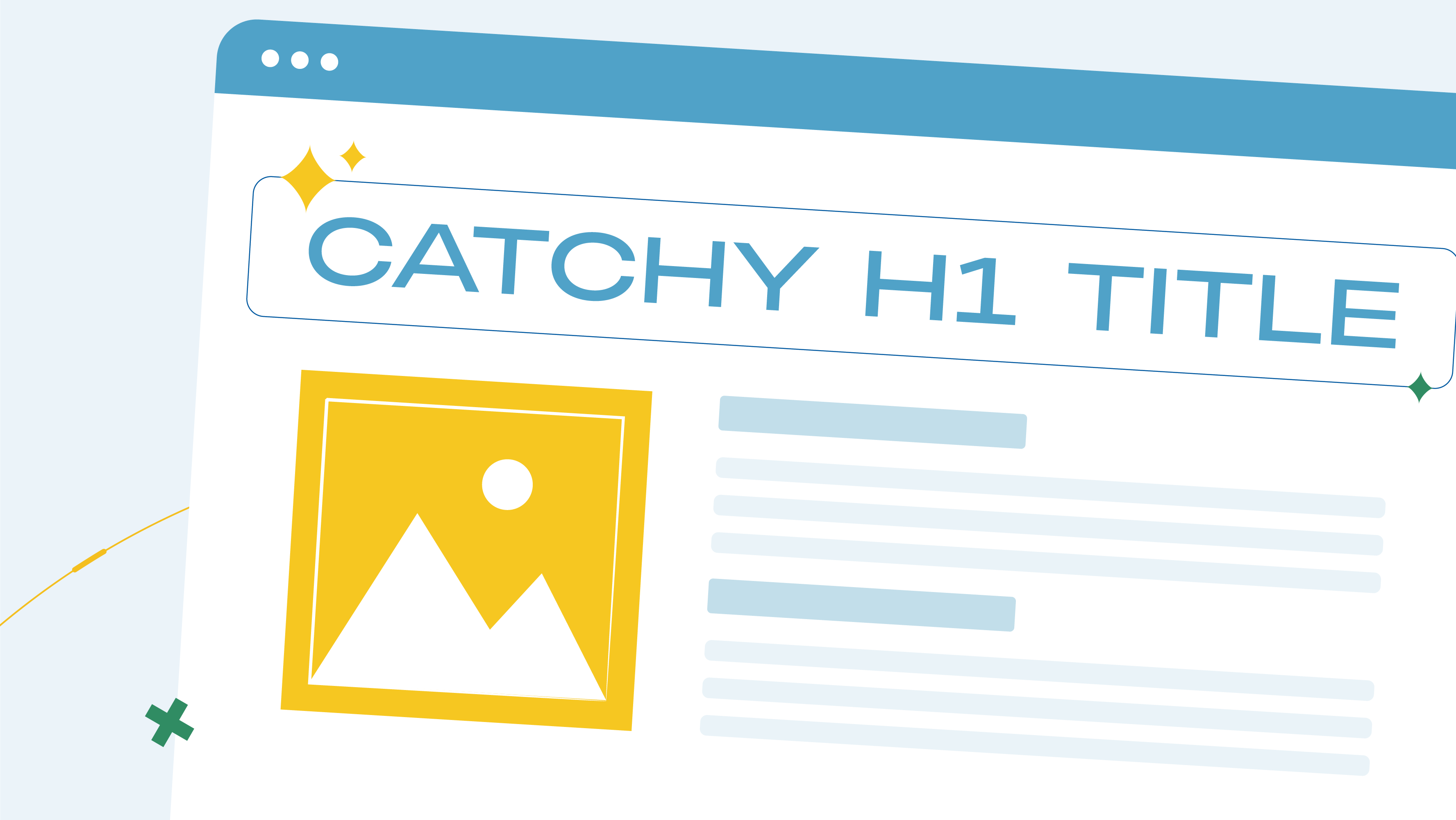Content writing is a rewarding process that gives you the exquisite feel of creation. But the feeling comes as a result of your creativity. When starting the writing process, you have all the tools and methods for writing the catchiest and most clickable content spiced up with exceptional titles and call-to-actions.
However, content writing is complex, with its challenges being unique. The way you write your blog, the structures, and the words you use play an essential role in CTR and conversion.
Titles are the first attention grabbers and impression creators. They set a solid ground for the readers’ trust and reliance. Consequently, your blog titles decide the clicks. 80% of people read only headlines rather than the actual blog content. As a writer, it’s your responsibility to learn how to write a blog title that engages and converts the readers.
Appeal, attraction, and value are the promises people look for from your blog titles through your blog content. Titles must intrigue the reader into taking a look and reading the content.
There is more than just drawing attention. The importance of a thoroughly-composed title goes far.
To recap the reasons titles are important, here they are:
- Attracting attention. In a world where we are constantly bombarded with information, a catchy title can help your content stand out.
- Generating interest. A good title will make people want to learn more about what you have to say.
- Increasing click-through rate. When people see a catchy title, they are more likely to click on it to learn more. Leads and blog exposure will come as a result.
- Improving SEO. Through the right optimization, you can land your blogs on the first page of Google. With good, optimized titles your chances of earning more backlinks and improving your backlink profile will increase.
A good headline complements, attracts, grabs, and holds long.
Blog titles: the secret formula
Take blog writing as making a specialty. Its creators make it unique, adding up the individual ingredients by personalizing. In SEO content writing, the task is to balance the technical and contextual portions, composing a formula that communicates well with the reader and the engines. They are the first thing people and engines see, observe, and analyze.
The first impression makers. Their strength is building your brand name and gathering an audience. In writing blog titles, like writing the SEO elements, chances are you may bump into duplicates, a duplicate title is as bad as a duplicate meta description, remember. Ensure you have no duplicates anywhere.
Write blog titles with these 10 pro tips
In this guide, I will walk you through the ten hands-on tips to teach you how to write a winning blog title, with examples that will get you the maximum clicks. We have found our secret formula for writing blog titles; it’s your time to master the art of content with catchy blog titles.
Let’s get into the discussion!
Include numbers
As it’s known from the famous novel, “Grown-ups like numbers.” Indeed, people are fond of numbers, statistics, and exactness. Being exposed to numerals, people pay more attention. As a consequence, the headline gets more clicks.
Numbers set specificity and clarity in the content; they quantify the benefits of your content, which can make it more appealing to potential readers. And it’s important that you write your numbers in numerals rather than in letters. It will strike the reader’s eye.
The experience also shows that odd numbers are more beneficial than even numbers. According to the statistics, 36% of Internet readers prefer blog titles with numbers.
Numbers are your winning coins in blog titles, for people expect to read a list of suggestions to solve their problems. Let’s observe some blog title examples:
“10 Ways to Improve Your Blog’s SEO”
“5 Tips for Getting More High-Quality Links to Your Blog”
“The 10 Most Important On-Page SEO Factors”
What’s appealing is that readers will know that they will get exactly 10 ways, 5 tips, and 10 factors, so they are mentally ready to take in the information.
Use the focus keyword
We discussed that you will please the SEO factor when you know how to write a catchy blog title that fits the blog title formula.
Google blog titles are human-friendly as well as engine-friendly. Don’t you ask how? The titles that appeal to engines include your primary keyword.
The strategy is to use the main keyword at the beginning of the blog titles. Use it once. That will create a mindful balance. Otherwise, the title may look spammy. Like in the overall content, in the title as well, keyword stuffing is a big no-no. As readers scan the titles first, engines, too, get to the titles prior to the content. Thus, it must correspond to the searcher’s intent. Your titles are the guarantee of content optimization.
State your message clearly
As mentioned, titles set the content expectation for the reader. This means titles mustn’t be out of nowhere, irrelevant, or create unnecessary shock (you face the click bites here and there when browsing).
As content creators, we must stay away from misleading our readers. And, most importantly, search engines. Your message must be clear in the title. It must convey what the reader will get from reading the article. What’s the value?
For instance, I titled the following article “10 Tips to Compose Blog Titles For Maximum Clicks (+Examples)”. When you read it, you expect to find ten individual tips that will eventually empower you to compose blog titles encouraging clicks. Also, as my title hints, you will have some blog title examples throughout the article.
Making my titles correspond to the content will establish trust and credibility with my readers. It also establishes the brand identity and whether your company can be trusted as a credible source. Moreover, it makes my content easier to scan and digest.
More blog title examples under exactness are:
“How to Write a Blog Post That Converts Visitors into Customers”
“How to Write a Blog Post That Gets More Traffic”
“10 Tips for Writing Engaging Blog Posts”
What the readers like is that they become trustful that reading the article they’ll learn “the way to convert visitors into customers”, “get more traffic with their posts”, and “write engaging posts”. You give the preview of what to expect from the article.
Keep the right length
Put in the formula of ideally catchy blog titles; how long you write and how to write blog titles matter.
The statistics from HubSpot show that titles of certain lengths get shared on different social platforms. It states that the perfect blog title consists of 60 characters. Twitter shares are mostly between 8-12 words, whereas Facebook shares are between 12-14. Knowing your objectives, you will form an idea of how long your ideal blog titles should be.
Our formula of success for catchy titles is keeping them in line with the blog’s objectives, following the media rules of length, and staying on point about what we post online.
Include power words
Words are, indeed, game changers. They have a tremendous impact on human psychology. We know that marketing has fair portions of psychological elements. Turns out, by mixing them well, you will get your personal secret formula for winning content.
As important as communication is, so are the words used in communicating the message. The choice impacts the effectiveness of transmitting ideas. Since we cannot use non-verbal means of communication in writing, we rely solely on the power of the lexicon.
Power words ignite emotional responses pushing the reader to action – clicking, reading, downloading, buying, or committing any campaign-intended action. Power words can benefit your digital marketing in many ways, including:
- Boosting reader’s interests
- Triggering emotional reactions
- Making your content robust
Power words fill your blog titles with interest and incitement. Power words are strong in meaning, get the most clicks, and contribute to the most conversion.
Certain words can appear in my blog titles depending on what I want to express and convey. The purpose is important, but there are also words that themselves hold power, e.g., challenging, effective, easy, proven, professional, etc.
Some catchy blog title examples spiced with power words:
“Boost Your SEO Rankings in 30 Days with These Proven Methods”
“How to Use Social Media to Build Links to Your Website: 5 Effective Tactics”
“10 Effective Uses of Professional SEO”
The reader is caught with the promises you hold: “proven methods”, “effective tactics”, “effective uses”. They know your suggestions are tested so they develop trust (even before reading). Overall, using power words can have a positive impact on your digital marketing metrics driving higher click-through rates.
Suggest a solution
People reach out to our blogs since they want to know the hows, are curious about the whats, and are excited to reveal the whys. It speaks of the nature and purpose of writing blog content. Our content writing efforts are meant to solve problems and suggest informative content to satisfy the most curious readers.
Well, that’s the content; what must a blog title do? In this respect, as for the impression and clarity, your titles set up the first scene. Reading it, people should know that they will get an idea for X problem solution and will be more inclined to click through.
Some blog title examples of problem-solving blog titles are:
“How to Improve Your Website’s SEO in 30 Days”
“10 Ways to Build High-Quality Backlinks That Will Boost Your Traffic”
“12 Methods to Write Content That Converts Visitors into Customers”
What makes the reader click is the solution to their problems. They become convinced that in 30 days the website traffic will improve, they can boost their traffic with the exact 10 ways you suggest, and their content will soon convert visitors into customers with the 12 methods you offer.
Ask a question
Oftentimes, people experience a problem without knowing they do. Until they are asked. When you ask your readers something, they start questioning themselves, “Do I really need this?”, “Am I struggling with this?”, “How will X change my life?”.
Interrogating is an effective way to reveal an existing problem and seek solutions.
The purpose of the question articles is to provide the reader with educational content about a topic of their interest. Besides generating interest among readers, question-based blog titles appear more valuable to the reader’s eye.
Imagine you see a question. Won’t you assume there is a solution hidden in the content? Questions imply answers and answers to your problems.
So, when you pique the readers’ curiosity, they appear more willing to read through your content. The intrigue and the pause from the questions make up for the conversion of the readers.
Here are some blog title examples of question-based blog titles:
“What Are the Most Important SEO Factors for 2023?”
“How to Use Guest Posting Link-building Collaborations?”
“How to Write SEO-Friendly Content That Converts?”
If you look at most search queries on Google, they are questions. And if you want to excel in your content reaching high clicks, the audience’s questions can be your saviors.
Add adjectives
As we have discussed, words hold power in them. Beyond the general power words, adjectives are the part of speech to focus on.
Power adjectives can make magic in compelling your readers. With their descriptive sense, adjectives emphasize the most important characteristics your content will offer.
The stronger the word, the more powerful its response effect. For instance, excellent, killer, fantastic, simple, useful, ultimate, etc. These words add value to the content and grab the reader’s eye. They know they are in for something great. There is also a difference between good and great.
Opt for the ones with more strength. For instance, as strong adjectives you can use the words ultimate, incredible, unbelievable, epic, powerful, exceptional, game-changing, etc. When you feel something reading a word then it’s worth using.
Adjectives are for gripping the reader and engaging with the content while creating a sense of urgency. Exercise them to your advantage.
Make an offer (+examples, templates, etc.)
Who doesn’t like the free cookie with the ordered cappuccino?
Giving away something that’s not asked is a nice-to-do marketing trick that engages with the reader. Giveaways also make a connection with the readers and establish trust.
For instance, when I write (+Examples), (+Bonus Tips), (+5 Templates), etc., my readers expect the free stuff in the blog article, and it excites them. Offering bonuses increases the chances of clicks and conversions.
“Sharing is caring” always works best. Share your expertise with your audience, show care and attention, and your efforts will pay off through clicks, reads, and engaged leads.

Use the brand name
From writing to the content optimization process, it’s important to check the SEO checklist thoroughly. The title in the search results is the preview of what to expect after the click.
However, the optimization goes further than that.
Adding your brand name to the SEO title tag is critical, for it boosts the credibility and inclination to click-through. Seeing the brand name, the reader develops an understanding of who the content is from. It’s similar to how they memorize your brand identity when they see your logo design that’s unique and compelling. They know it’s not out of nowhere.
Regarding SEO, your blogs are more likely to appear in the SERP when someone searches for your brand name. Thus, the searches will lead people to your blogs if your brand name gets known.
Your formula here should be the title – or : or | of your choice and the brand name. For this post, I will go with “10 Tips to Compose Catchy Blog Titles – SayNine”
Exceptional blog titles are worth the effort
The very first thing that gets noticed by the Internet about your content is the blog titles. The catchier and more optimized they are, the higher your chances of getting clicks and engagement. The practice-based golden rules of a converting blog title were discussed.
Remember that the secret formula for catchy blog titles is individual to each creator. Depending on the industry, objectives, and circumstances, writers may have different procedures.
However, there are standards to follow.
Ensure you express your message explicitly, clearly, and concisely. From using numbers to grab the readers’ attention to asking questions to intrigue the curiosity and making extra offers, you should know what each technique holds as a benefit and why blending them all into an impressive content mix is important.
FAQ about writing blog titles
What is the difference between an SEO title and a blog title?
The SEO title, also known as the meta title, is a specific HTML element that is primarily designed for search engines and web browsers. It’s displayed at the top of a web browser’s window or tab when someone visits a webpage and is also used as the main clickable link in search engine results pages.
The blog title is the overarching title that represents your entire blog or website. It’s what visitors see when they land on your blog’s homepage or visit your blog’s main page.
How to optimize the SEO title and the blog title?
While there can be some overlap between the two, it’s important to distinguish between them and optimize them differently:
SEO Title Optimization: Focus on including relevant keywords that users might search for, making it compelling and concise, and ensuring it accurately represents the content of the specific page.
Blog Title Optimization: Emphasize creating a memorable and meaningful title that reflects your blog’s identity and content focus, but don’t worry as much about fitting within strict character limits or maximizing keywords.
What is an optimized blog title?
An optimized blog title is SEO-friendly, and follows a certain criteria of being engine-friendly. This includes an appropriate title length that fits within the recommended character limit for search engine displays (around 50-60 characters), having the main keyword or keyphrase at the beginning of the title, aligning your title with common search queries.
How to make sure the blog title is clickable?
Piquing the reader’s curiosity and attracting their attention are key to getting the clicks. To have a clickable title, you can fit it into the most liked blog formulas – suggest a list, write a how-to explanation, satisfy the whats and whys, compare two solutions, guide the reader into a context, stating an exact answer.




